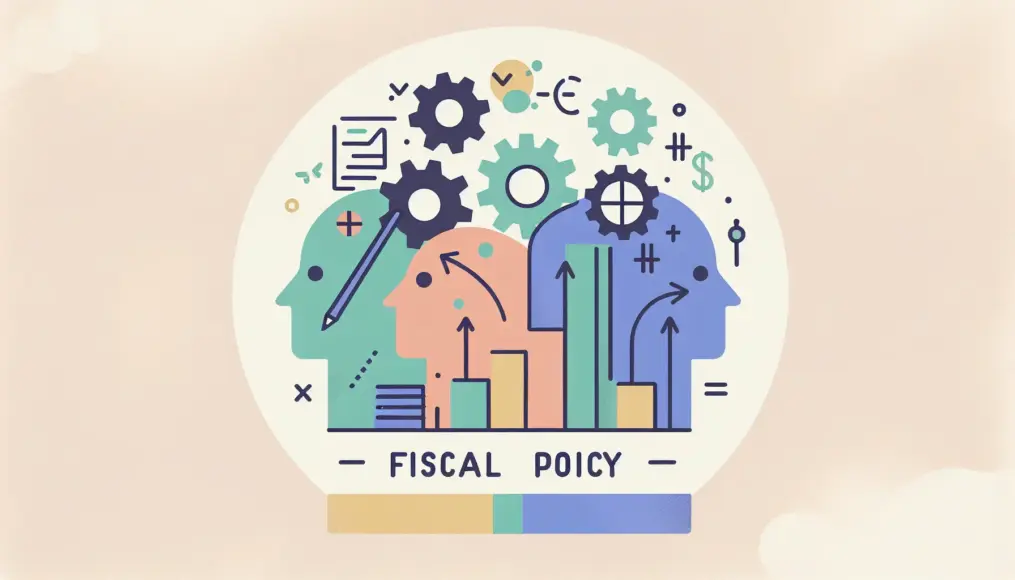Have you ever thought about political party subsidies? This system plays a crucial role in supporting political activities, serving as a key source of funding for political parties. Understanding how politics operate in Japan and how this system impacts our daily lives is an important first step in deepening our interest in politics.
In this article, we’ll delve into the definition and purpose of political party subsidies, as well as the history of the system. Together, we’ll explore how these subsidies influence our society.
- We’ll explain the basic definition of political party subsidies and their objectives.
- We’ll clarify the differences between general subsidies and specific subsidies.
- We’ll discuss the challenges facing the system and the necessity for reforms looking toward the future.
Understanding Political Party Subsidies: The Basics
Learning about political party subsidies is an important step in deepening our understanding of politics. This system provides financial support for political parties to carry out their activities and is essential for the healthy functioning of democracy. Let’s take a closer look at how these subsidies work, their purposes, and the historical context behind them.
What Are Political Party Subsidies and Their Purpose?
Political party subsidies refer to the funds provided to political parties by the national or local government to support their activities. The main goal of this system is to ensure a stable supply of financial resources for political activities, preventing any specific party or candidate from receiving unfair advantages. Creating an environment where political parties can compete fairly is also a key objective.
Additionally, this system plays a role in enhancing the transparency of political activities, making it easier for the public to monitor them. With political party subsidies in place, citizens can feel more connected to the activities of parties, which is expected to increase their interest in politics.
- Political party subsidies are funds provided by national or local governments.
- They aim to increase transparency in political activities.
- They help promote fair competition among political parties.
The History of the Subsidy System in Japan
Japan introduced its political party subsidy system in 1994. The backdrop for this initiative was the growing concern over the misuse of political funds and corruption. From the outset, political party subsidies were anticipated to be a means of enhancing the transparency of political financing.
Since then, the system has undergone several revisions, and it now determines the amount of subsidies based on the activities of political parties. For instance, the number of seats held by a party or the votes they receive influences the amount of funding they receive, designed to promote democratic competition. This framework encourages parties to reflect the voices of the public in their activities.

If you found this article helpful in understanding political party subsidies, you might also enjoy this article: “Diving Deeper into Japan’s House of Representatives Election System: Its History and Impact.” This blog offers a detailed explanation of the history and evolution of the House of Representatives election system, touching on the background of political activities and the effects of the electoral system on society. It will help you consider the political framework from a broader perspective.
- Japan established its political party subsidy system in 1994.
- The system was created to enhance the transparency of political funds.
- Subsidies are determined based on the number of seats and votes received by parties.
Types of Political Party Subsidies and Examples
Political party subsidies mainly fall into two categories: general subsidies and specific subsidies. Understanding the different uses and purposes of these funds is crucial. By learning how political parties actually receive these subsidies, you can gain a closer perspective on the system. In this section, we’ll explore the distinctions between these two types of subsidies and provide concrete examples.
Difference Between General and Specific Subsidies
General subsidies are funds used by political parties for their basic activities. For instance, these funds are allocated for election campaigns, publicity efforts, and the operational costs of party headquarters. Because these subsidies are determined based on the number of seats held or votes received, they offer a fair level of support that reflects the party’s strength.
On the other hand, specific subsidies are funds granted for particular purposes or projects. For example, they might be used for initiatives aimed at promoting specific policies or for regional development efforts. In this way, specific subsidies have a clearer purpose and provide support for addressing specific challenges.
- General subsidies are used for basic activities.
- Specific subsidies are granted based on specific purposes.
- Both types are utilized according to the activities of the political parties.
Examples of Actual Subsidy Receipt
A concrete example of political party subsidies can be seen in the general subsidies received after elections. In this case, the amount of subsidy is determined based on the number of votes and seats won, and it is used for party operations and election activities. For instance, a party that holds seats in the legislature may receive general subsidies ranging from several million to several hundred million yen after an election.
An example of specific subsidies includes funding for projects aimed at regional development. A political party may receive specific subsidies to strengthen its policies in a certain area and use these funds to support local events and activities. This illustrates how subsidies play a crucial role in supporting political party activities.
- A specific example of subsidy receipt is the general subsidy received after elections.
- There are also examples of specific subsidies used for regional development.
- Subsidies serve as an essential resource for supporting political party activities.
The Impact of Political Party Subsidies
Political party subsidies not only invigorate party activities but also indirectly affect our lives as citizens. In this section, we will explore how receiving these subsidies changes the way political parties operate and, consequently, how it impacts our daily lives.
Effects on Political Party Activities
Political party subsidies are a crucial source of funding for party operations. With this financial support, parties can conduct their election campaigns and public outreach more effectively. For instance, they can enhance their campaign efforts and raise awareness about their policies, thereby increasing their chances of gaining support from a larger audience.
Moreover, receiving subsidies allows parties to broaden their scope of activities. They can engage in local events and prioritize dialogue with citizens, making politics feel more accessible. As a result, the credibility and transparency of political parties improve, making it easier for them to garner public support.
- Political party subsidies enhance the effectiveness of election campaigns.
- Broadening their activities promotes dialogue with citizens.
- The credibility and transparency of political parties improve.
Indirect Impact on Citizens’ Lives
The effects of political party subsidies extend beyond party activities; they also have indirect repercussions on citizens’ lives. For example, when parties gain broader support, it becomes easier for them to implement policies. This increases the likelihood of enacting policies that directly affect our daily lives.
Additionally, when parties operate transparently, it can spark greater political interest among citizens. As a result, more individuals may become engaged in the political process and make a point to vote in elections. Ultimately, this can strengthen democracy as a whole, leading to improvements in our quality of life.
- Progress in party activities leads to more effective policy implementation.
- Increased political interest among citizens is anticipated.
- Strengthening democracy can enhance our quality of life.
Challenges and Future Prospects of the Political Party Subsidy System
The political party subsidy system is a vital framework designed to ensure that political parties can operate fairly. However, it faces several challenges that need to be addressed. In this section, we’ll explore issues related to transparency and trustworthiness within the system, as well as the need for reforms moving forward. Understanding these aspects may help us chart a better course for the future.
Issues of Transparency and Trustworthiness
One of the main challenges of the political party subsidy system lies in its transparency and reliability. For instance, when the use of subsidies is unclear, citizens cannot know how their money is being spent. A sustained lack of clarity can lead to a decline in public trust towards political parties.
Furthermore, insufficient disclosure of information regarding the receipt and management of subsidies poses a significant problem. For citizens to effectively monitor political activities and voice their opinions, there must be a push for greater transparency in information sharing. This transparency can make political activities more relatable to the public and is expected to enhance interest in politics.
- Lack of clarity in subsidy usage can erode trust.
- Insufficient information disclosure makes public oversight difficult.
- Improving transparency is key to boosting public engagement.
The Need for Reforms Moving Forward
To enhance the political party subsidy system, reforms are essential. Specifically, it’s crucial to clarify how subsidies are used and to present this information in a way that is easily understandable for the public. Additionally, establishing a mechanism for parties to report regularly on how they are utilizing these funds is also important.
Moreover, there is a growing call to reassess the amounts and distribution methods of subsidies. If funding is disproportionately allocated to specific parties, it risks undermining fairness. Addressing these issues requires a comprehensive review of the entire system. By creating an environment where every citizen can engage more easily in the political process, we can strengthen democracy as a whole.
- There is a need to clarify subsidy usage and publicly disclose information.
- The introduction of a regular reporting system is being called for.
- A comprehensive review of the system is necessary to maintain fairness.
Conclusion
Political party subsidies are a crucial system designed to support fair activities among political parties. Through this system, parties gain funding for their operations, enabling them to engage in election campaigns and promote policies. Additionally, these subsidies have a significant impact on citizens’ lives, fostering greater interest in politics. However, issues surrounding transparency and trustworthiness within the system indicate that reforms are necessary moving forward.
Looking back at what we’ve discussed, I hope you now have a deeper understanding of the different types of political party subsidies, their specific examples, and the effects they bring. By cultivating an interest in political activities, we can help steer our lives in a better direction.
- Political party subsidies serve as a funding source for fair political activities.
- There is a pressing need to enhance the transparency and trustworthiness of the system.
- These subsidies also impact citizens’ lives and raise interest in politics.
Taking an interest in politics and society is an important step for your future. I encourage you to use this information to deepen your understanding of political matters. If you have any thoughts or opinions about this article, please share them in the comments!



Comment